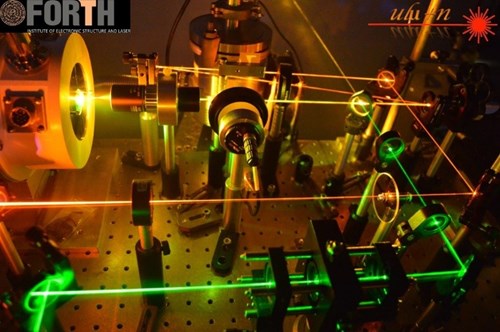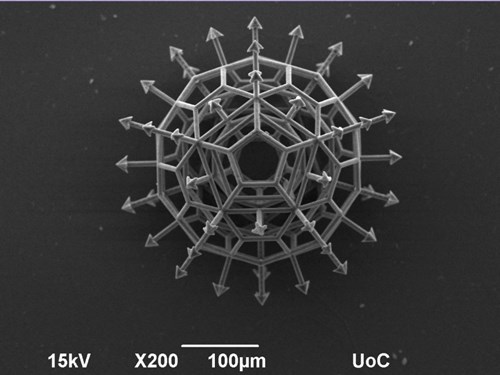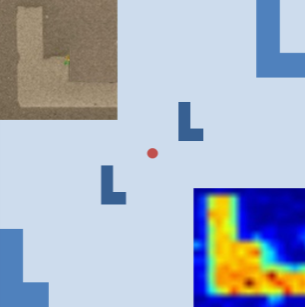Upgrades and expansion of the NFFA-Europe offer

The NFFA-Europe catalogue is always expanding: a growing platform of advanced techniques and methodologies made at disposal of users at the various NFFA access sites. Some of them are excellent turnout of the JRA outcomes enlighthening yet the core target of NFFA-Europe: the user.
A description of the new available techniques which are also browsable in the NFFA-Europe catalogue is provided.
INST. 1 LITHOGRAPHY & PATTERNING
Laser Surface And In-Volume Patterning

Provider: FORTH
Laser patterning is a material independent technique for the controlled patterning of materials at both the micro- and the nano- lengthscales. The technique offers the ability to directly write patterns on the surface as well as complex 3D channels into the bulk of solid materials, including biomaterials. Being a material independent process it can be potentially used for to various applications ranging from microfluidic systems and sensors to tissue engineering scaffolds.
INST. 1 LITHOGRAPHY & PATTERNING

Two-photon lithography is part of the Direct Laser Write family of techniques. It is based on the phenomenon of two-photon absorption. When the beam of an infrared ultrafast laser is tightly focused inside the volume of UV-curable photopolymer, it is possible for the material to simultaneously absorb two IR photons, instead of one UV. Moving the beam (or the sample) in three directions, allows for the freeform writing of 3D structures.
The photopolymers used can be commercially available such as the IPx, AZ, and SU8 photoresists, but also custom-developed materials by FORTH (such as ultra-high-resolution organic-inorganic hybrids, metal-binding materials, fluorescent and nonlinear materials).
INST. 1 LITHOGRAPHY & PATTERNING
Nano-Object Transfer & Positioning

Provider: DESY
“Nano-Object Transfer & Positioning” permits identifying, marking, and transferring pre-selected nano- and microscale single objects and enables their multi-analytical characterization by re-localization with different nano-science instruments at labs as well as Large Scale Facilities.
The offer comprises an advanced marker design tailored to specific requirements, the subsequent deposition of the markers by electron beam induced deposition (EBID), and a software tool that translates the position coordinates between the nano-science instruments via the marker system.
EBID markers are deposited using platinum (Pt) containing precursor material, making them suitable for localization by electron or X-ray excited Pt fluorescence, absorption, and their topography contrast. Markers are typically a few 10 mµ long, 15 µm wide and 0.1-1 µm thick and can be easily adapted to other specific need. The position coordinates are generated by a high-resolution field emission scanning electron microscope or an optical light microscope equipped with a translation stage and a digital readout of the lateral and height stage coordinates.
INST. 3 THEORY & SIMULATION
Multiscale Modeling Of Irradiation-Materials Interaction Under High-Carrier Density Excitation Conditions

Provider: FORTH
A multiscale theoretical modelling toolbox is offered to describe the physical fundamentals and mechanisms that account for the associated experimental observations after single and multiple pulse irradiation at high-carrier density excitation conditions. Such theoretical framework can be applied to predict the induced structural modifications including phase transitions and morphological changes.
The multi-scale simulation code comprises the following modules that are material and source parameters dependent:
- Energy absorption (based on results from first principles used to compute the optical properties of the material): spatio-temporal distribution of absorbed energy (Fig.a)/ Finite Difference Finite Domain Schemes,
- Surface plasmon excitations: computation of conditions for excitation, length and lifetime,
- Electron excitation and relaxation processes: computation of electron temperature and equilibration through electron-phonon scattering processes, application of Two Temperature Model (Fig.b),
- Thermal response of the lattice and phase transitions: spatio-temporal lattice temperature distribution and investigation of associated phases transitions (i.e. hydrodynamical effects and solidification)
- Elastic and plastic effects: application of dynamic elasticity equations and coupling with above modules,
- Estimation of phase transition, modification thresholds and morphological changes
The simulation codes are predominantly designed to run for metals, semiconductors, dielectrics (bulk, thin film or nanostructures). Nevertheless, application to other systems, including multilayered structures is also possible.

